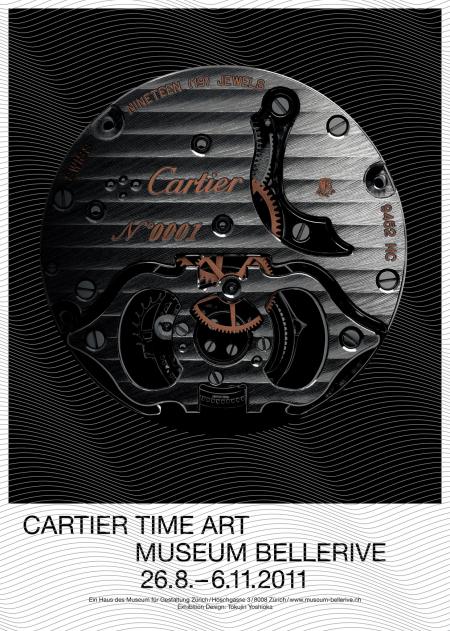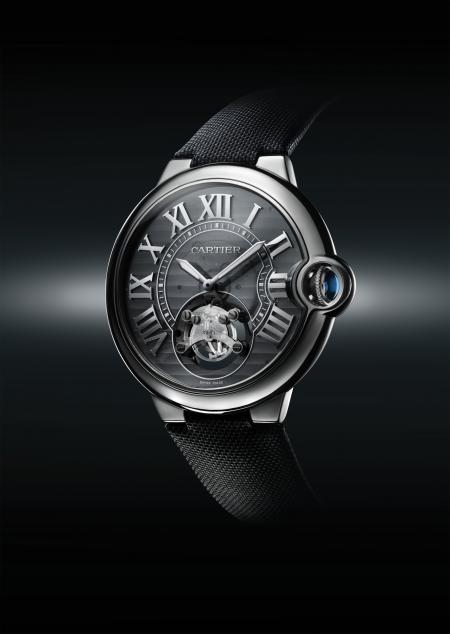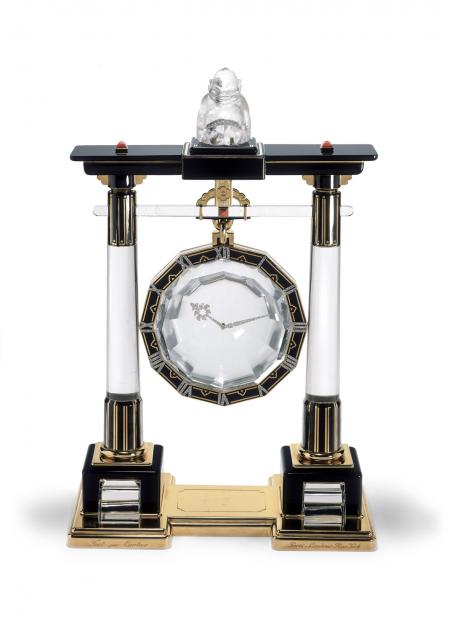Cartier Time Art – Museum Bellerive – Zurich (Switzerland)
By MyWatch
The Museum Bellerive – home to the Applied Arts Collection of the Zurich Museum of Design – is the first location in a series of exhibitions that make up a worldwide touring event.
“Cartier Time Art” unites the largest number of Cartier timepieces ever displayed in public, from its origins through to the present day, and offers a rare opportunity to contemplate Cartier’s creativity. Throughout the ages, this collection of creations has successfully mixed ingenuity with aesthetical and technical innovation and is a testament to the vitality of Cartier’s watchmaking heritage. The rich language of shapes, designs and complications apparent in these objects emphasises Cartier’s high level of expertise. It is in this context that the exhibition in the Museum Bellerive will display twelve movements and seventeen Fine Watchmaking timepieces, including the forward-thinking and visionary Cartier ID One watch, which offers a glimpse into the watchmaking future at Cartier…
The unique journey offered by the exhibition begins in 1874 with a chatelaine-watch in yellow gold, pink gold, enamel and pearls, and finishes in the present day with the Cartier ID One watch in niobium-titanium, featuring an ADLC coating and carbon crystal. Modern and avant-garde are two constants that are closely linked to Cartier’s history, as is demonstrated by the 156 vintage pieces from the Cartier Collection that will also be on display (chatelaine-watches, wristwatches, travel clocks, etc.). Throughout this temporal journey, one key element stands out: the daring spirit that drives all Cartier actors, from its craftsmen to its designers, with which the designer Tokujin Yoshioka has imbued the exhibition’s scenography. Tokujin Yoshioka was awarded the 2011 Design of the Year prize by A&W Architektur & Wohnen Magazine.
Ingenuity and Research: Towards a Shared Vision
For almost four years, Cartier’s Fine Watchmaking Collection has benefitted from an unprecedented wave of creativity, where the innovation and imagination of Cartier’s designer-watchmakers have been combined with the expertise and excellence of the Manufacture’s craftsmen. For the exhibition, Cartier has chosen to present twelve exceptional movements fitted in the seventeen watches on display by means of an original 3D setting, where each movement is spatialised according to a sophisticated process designed by Tokujin Yoshioka.
The Calibre 9800 MC – a new movement that helps to counteract the effects of gravity on timing in vertical positions – can be discovered in the Rotonde de Cartier Astrorégulateur watch.Necessitating almost five years of development in the Cartier Manufacture, where it was designed, developed, manufactured and assembled, this movement was also the subject of several patent applications. This new grande complication testifies to Cartier’s profound commitment to Fine Watchmaking.
Pushing the level of ingenuity and research even further, Cartier will also be presenting the Cartier ID One watch in this exhibition, a concept timepiece that requires no adjusting. Manufactured and assembled according to an innovative design that combines cutting-edge materials and technology, this watch will never have to be adjusted throughout its entire lifecycle.
At the Heart of Horlogical Design
This journey leads us to the heart of Switzerland, to the La Chaux-de-Fonds valley and to the Cartier Manufacture. This is the nerve centre for the design and production of Cartier watchmaking creations and houses, in over 30,000 m², all the equipment necessary for the design, manufacture, production, maintenance and restoration of Cartier watches and movements.
Watchmaking Tradition Fuelled by Modernity
The 156 historical timepieces that will be presented at the Museum Bellerive have been selected from the treasures of the Cartier Collection, a unique array of vintage Cartier objects that date from its origins through to the present day.
These artefacts are often exhibited in the world’s most important museums.Emblematic creations, such as the Santos wristwatch (released in 1911), the large “Billiken” mystery clock (1923), a very rare multi-complications pocket watch dating from 1927 and the exceptional 1928 Tortue watch with minute-repeater, will be joined by the largest collection of mystery clocks ever displayed in public in one place, all waiting to be discovered.
With respect for both tradition and technical complexity, the “Cartier Time Art” exhibition unveils the creative power of Cartier watchmaking and is a testament to the enduring passion that has driven this watchmaker-jeweller since 1847.
Cartier Time Art – Museum Bellerive – Zurich (Switzerland)
26 August – 6 November 2011


